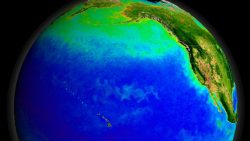
New research reveals significant changes to the circulation of the North Pacific and its impact on the initial migration of humans from Asia to North America.
The international study, led by the University of St. Andrews in Scotland and published Dec. 9 in Science Advances, provides a new picture of the circulation and climate of the North Pacific at the end of the last ice age, with implications for early human migration.
The Pacific Ocean contains around half the water in Earth’s oceans and is a vast reservoir of heat and carbon dioxide. However, at present, the sluggish circulation of the North Pacific restricts the movement of this heat and carbon dioxide, limiting its impact on climate.
The international team of scientists used sediment cores from the deep sea to reconstruct the circulation and climate of the North Pacific during the peak of the last ice age, roughly 21,000 years ago. Their results reveal a dramatically different circulation in the ice age Pacific, with vigorous ocean currents creating a relatively warm region around the modern Bering Sea.
“Our work shows how dynamic Earth’s climate system is. Changes in the circulation of the ocean and atmosphere can have major impacts on how effectively humans may inhabit different environments, which is also relevant for understanding how different regions will be affected by future climate change,” said third author Robert Jnglin Wills, a postdoctoral researcher in atmospheric sciences at the University of Washington.
Read more at UW News »
